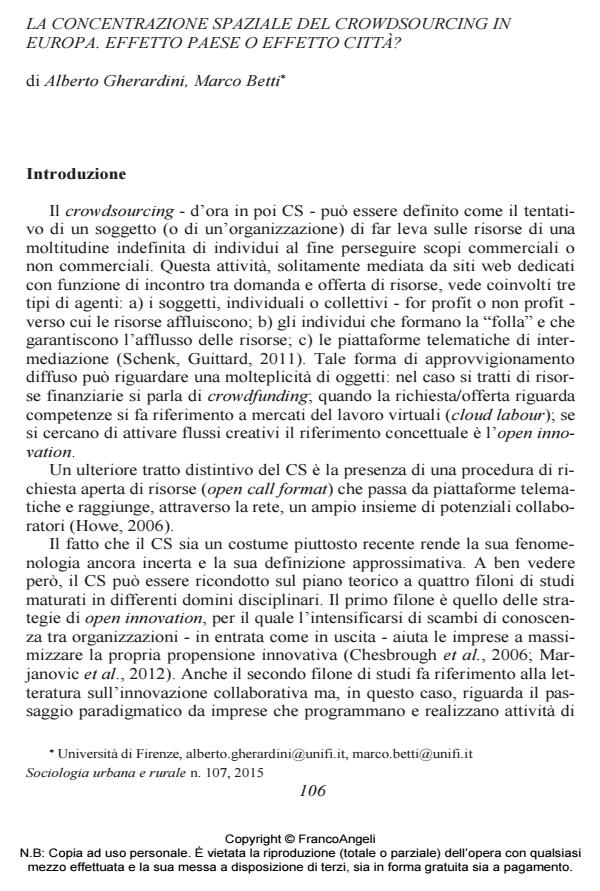The Spatial Clustering of Crowdsourcing. National or Urban Patterns?
Journal title SOCIOLOGIA URBANA E RURALE
Author/s Alberto Gherardini, Marco Betti
Publishing Year 2015 Issue 2015/107
Language Italian Pages 15 P. 106-120 File size 134 KB
DOI 10.3280/SUR2015-107008
DOI is like a bar code for intellectual property: to have more infomation
click here
Below, you can see the article first page
If you want to buy this article in PDF format, you can do it, following the instructions to buy download credits

FrancoAngeli is member of Publishers International Linking Association, Inc (PILA), a not-for-profit association which run the CrossRef service enabling links to and from online scholarly content.
The paper analyzes the spatial concentration of crowdsourcing platforms in 11 European countries showing the inappropriateness of the varieties of capitalism approach and of the national innovation system concept. The phenomenon is more correctly understood by using the urban dimension as unit of analysis. The platforms are concentrated mainly in metropoli tan cities, rich in skilled human capital and characterized by an environment of trust in others.
Keywords: Clusters, Crowdsourcing, Varieties of Capitalism, National Innovation Systems, Urban Studies, Micro-finance
Alberto Gherardini, Marco Betti, La concentrazione spaziale del crowdsourcing in Europa. Effetto paese o effetto città? in "SOCIOLOGIA URBANA E RURALE" 107/2015, pp 106-120, DOI: 10.3280/SUR2015-107008